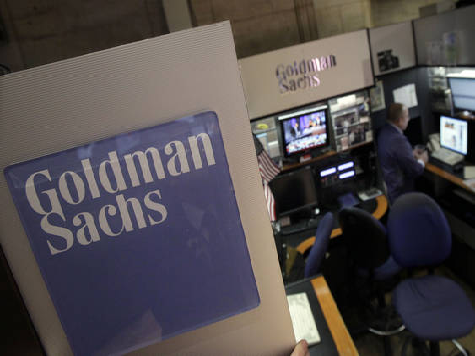Goldman Sachs and a group of top tier investment banks are about to buy Silicon Valley’s Perzo to directly compete with Bloomberg LP, their current vendor for institutional trader interface and messaging.
Facing annual license costs per terminal of over $20,000 for use of highly dated and completely proprietary software, the banks are adopting “open-source” software backbone that allows customers to plug part or all of their software applications into their own systems and alter it as they see fit.
Bloomberg’s proprietary software dominates communications between trading and research departments at banks, hedge funds, and investment advisers. Originally written in FORTRAN in the 1980s, the company adopted an internal set of tools in “application framework that allows the majority of their user interface programmers to code in JavaScript” on the server-side.
The company crows that they “might have the largest footprint of server-side JavaScript in the world” at around “19 million lines of code.” Although big numbers of lines of proprietary code are called “job security” for the older computer programmers at Bloomberg who wrote the code, it means their customers have very little input on customizing the product to meet their changing needs.
According to Reuters, “Several banks and asset managers are considering an investment in Perzo, including Morgan Stanley, JPMorgan Chase & Co, Bank of America Corp, Deutsche Bank AG, HSBC Holdings and PLC, BlackRock Inc.” The companies have received term sheets for the deal and signed non-disclosure agreements in recent days. Such a customer rebellion by trading and underwriting firms, referred to as “bulge-bracket,” represents an existential threat to Bloomberg’s hammer lock on financial industry communications.
After becoming a general partner as the head of equity trading, and later, systems development at Salomon Brothers investment bank in the early 1970s, Michael Bloomberg was laid off with a $10 million severance package after the firm was acquired in 1981. Using his own money, Bloomberg went on to set up a company called Innovative Market Systems to “sell high quality business information, delivered as quickly as possible and in as many usable forms as possible, via technology (e.g., graphs of highly specific trends).” From a start of 22 terminals in 1982 at Merrill Lynch, the company has grown to over 310,000 terminals and ownership of radio and television assets. Michael Bloomberg is believed to be the 11th richest man in the world, with a net worth of $34 billion.
Bloomberg’s business model has been compared to Blackberry, whose product dominated the smart phone market until Apple came out with its iPhone. But a number of promising venture capital start-ups endeavored to compete with Bloomberg LP’s proprietary product with their own less expensive proprietary product. Bloomberg’s huge installed base, at virtually every Wall Street trading firm, like Blackberry once had, has continued to undermine competition, however.
Last year, there was an insider scandal regarding Bloomberg’s news division’s access to information about bank professionals that it assumed had been private, such as when an employee had last logged into his or her terminal. Bloomberg publicly announced that they would change their policy to bar reporters from accessing client data.
But the revelations by Edward Snowden regarding U.S. government snooping on American businesses has caused financial firms to feel more vulnerable and concerned about their communications being archived at Bloomberg and government regulatory second-guessing of their trading practices.
As the Financial Times reported Sunday night, European regulators have also been raising concerns about U.S. government regulators issuing multi-billion-dollar fines against foreign banks’ trading practices around the world. “France has gathered support to challenge U.S. regulators imposing heavy penalties on foreign banks at a G20 meeting of world leaders later this year after the record $8.9bn fine levied on BNP Paribas last month.”
Foreign nations see the U.S. efforts to act as an international policeman as undermining their efforts to raise the financial solvency of their banks. Much of the evidence accumulated by U.S. regulators in the “long procession of fines” against British, French, and other nations’ banks has come from trader “messaging” across Bloomberg.
At $20,000 a user, Bloomberg has become the most expensive social network system on earth. Messaging applications will continue to dominate communications between firms regarding “price discovery,” but in the future, they may be open-source encrypted across Perzo for pennies per month.
The author will respond to comments by readers.

COMMENTS
Please let us know if you're having issues with commenting.